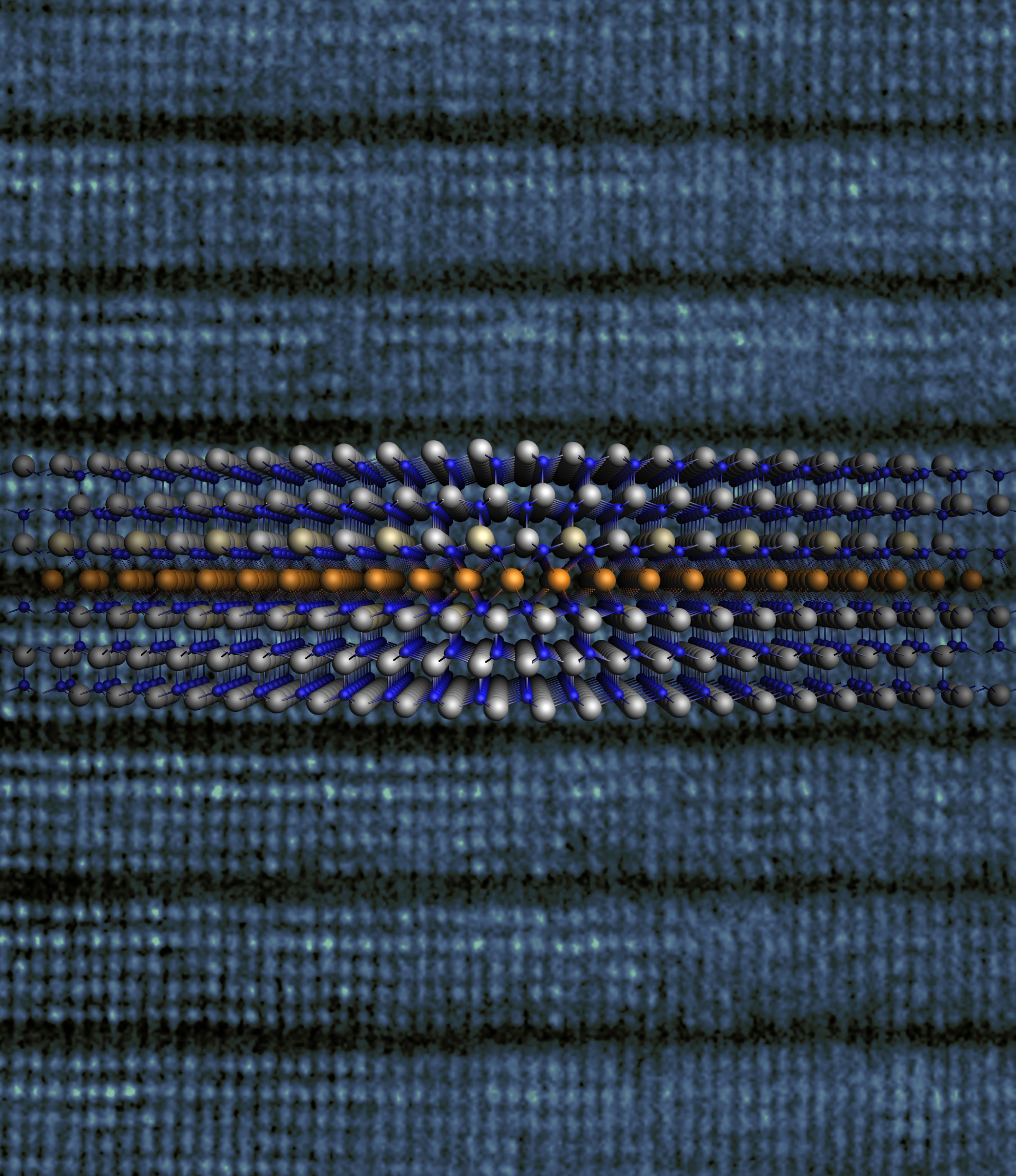Thermal treating of metallic magnesium on gallium nitride semiconductors results in the formation of a distinctive superlattice structure. Magnesium, nitrogen, and gallium atoms are shown in orange, blue, and grey, respectively. Credit: Jia Wang
New research has discovered a new superlattice structure in gallium nitride (GaN) using magnesium (Mg), promising advancements in semiconductor performance.
A new study has revealed a new superlattice structure in gallium nitride (GaN) by combining it with magnesium (Mg), potentially enhancing GaN-based semiconductor devices and advancing the field of elastic strain engineering.
A study led by Nagoya University in Japan revealed that a simple thermal reaction of gallium nitride (GaN) with metallic magnesium (Mg) results in the formation of a distinctive superlattice structure. This represents the first time researchers have identified the insertion of 2D metal layers into a bulk semiconductor.
By carefully observing the materials through various cutting-edge characterization techniques, the researchers uncovered new insights into the process of semiconductor doping and elastic strain engineering. They published their findings in the journal Nature.
GaN is an important wide bandgap semiconductor material that is poised to replace traditional silicon DOI: 10.1038/s41586-024-07513-x
The Japan Science and Technology Agency supported the research through the ASPIRE program and AdCORP Program grants. This project also received support from the Ministry of Education, Culture, Sports, Science, and Technology of Japan, the Ministry of Economics, Trade and Industry, and Japan Society for the Promotion of Science.



















 (2025 Updated)
(2025 Updated)
Discussion about this post